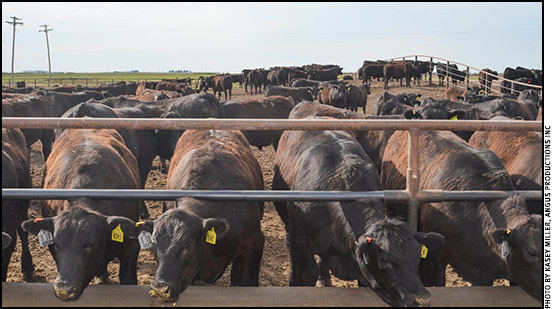 Benefits of Stocker Supplementation
Benefits of Stocker Supplementation
Depend on When You Sell Them
Researchers look at effects of distillers’ dried grains on stocker and finishing performance, carcass merit.
Steers initially averaging 416 pounds (lb.) in the first year of the study (2007) or 458 lb. in the second year (2008) were grazed on Texas High Plains wheat pasture, stocked at slightly more than one acre per head, with the following treatments:
- distillers’ dried grains (SDDG) at 0.5% of body weight (about 2.7 lb. per day),
- dry-rolled corn (SDRC) at 0.5% of body weight (about 2.7 lb. per day), or
- nonsupplemented controls (SCON).
All groups gained exceptionally well on wheat. The SDDG group gained 3.08 lb. per day, significantly more than either the SDRC group (2.88 lb. per day) or the SCON group (2.84 lb. per day). However, even the SDDG group used supplement inefficiently, requiring 11.5 lb. supplement per 1 lb. added gain.
There appeared to be some substitution of both supplements for forage consumption, especially in the SDRC group. However, both supplements resulted in greater grazing days per acre and more total gain per acre. Even though protein content of wheat pasture is high, performance was greater with a medium-protein, medium-energy, low-starch supplement than a low-protein, high-energy, high-starch supplement, which did not improve performance over nonsupplemented controls.
After grazing, the Hereford steers were placed in a feedyard and stepped up to a steam-flaked corn ration with one-half of each of the three stocker treatment groups receiving either 35% DDG (FDDG) or no DDG (FSFC). Cattle were fed an average of 95 days, when estimated fat cover was ½ inch. There were no significant differences among stocker treatment groups in average daily gain (ADG) during finishing, although the SDRC-supplemented group tended to be higher. However, the SDRC group was significantly more efficient. There were no significant differences for final weight or any carcass traits.
Considering just the finishing phase on a carcass-adjusted basis, FSFC had significantly higher ADG, feed efficiency and final weight, compared to FDDG. [FSFC also were higher in total (stocker + finishing) weight gain.] FSFC had higher hot carcass weight, dressing percentage, fat thickness, and numerically higher Yield Grade (lower percent lean) than FDDG; ribeye area and marbling score did not significantly differ.
As controlled studies and industry observations have shown over the years, nutritional management resulting in higher performance during earlier production phases may be offset, at least somewhat, or even reversed in later phases. Thus, supplementation decisions for stockers should consider whether ownership is retained for finishing.
[Click here to go to the top of the page.]












